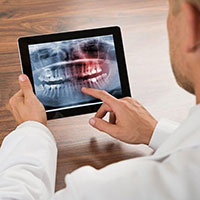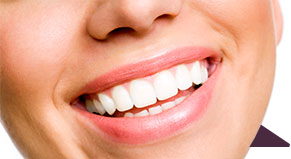 The very first X-ray machine was invented in 1895 by a German physicist named Wilhelm Röntgen. The medical community immediately saw the benefits and started using X-rays to diagnose and treat their patients.
The very first X-ray machine was invented in 1895 by a German physicist named Wilhelm Röntgen. The medical community immediately saw the benefits and started using X-rays to diagnose and treat their patients.
The only problem was that back in those days medical science didn’t quite understand just how dangerous X-rays were. Many people died or suffered as a result of being accidentally given too high a dosage of radiation.
As the decades passed, X-ray technology grew in leaps and bounds and became much safer. In fact, many dentists are fond of reminding their patients that they will get a higher dose of radiation flying from Los Angeles to New York than they would with a single chest X-ray.
Nowadays many doctors and dentists are using a technology called “digital X-rays.” We’re going to look at a traditional and digital X-ray and see which one is better and offers more value for the comfort and safety of the patient.
Traditional X-Rays
This form of an X-ray machine has been in use for many decades. The process to take a conventional X-ray is very similar to the old cameras that used film (instead of memory cards like they do nowadays).
The dental assistant will place a lead vest over the chest of the patient and then point the X-ray machine at a specific spot in their mouth. A film-like material will be placed in the area in the mouth that the dentist wants to get a look at.
Once everything is set up, the assistant will temporarily leave the room and press a button that sends X-ray waves through the person’s jaw, which are captured on the film inside their mouth. The entire process is painless and happens in a fraction of a second.
The assistant will then remove the film and take it to a processing room. It will take several minutes for the X-ray film to process and be developed. At this point the dentist will take the X-ray picture and put it on a backlit board which enables him to see inside your teeth/jaw.
Digital X-rays
If traditional X-rays can be compared to an old 35mm camera from the 1990’s, then a digital X-ray can be likened to a digital camera from today.
The general process to take a digital X-ray is still the same as the traditional way, but instead of film that needs to be developed, the X-ray image is captured digitally and sent to a computer where it will immediately be able to be viewed.
You won’t have to wait 15 or so minutes for the film to process because there is no film, to begin with.
The Processing Difference – Digital X-rays don’t require processing time. The images are immediately available to be viewed on a computer screen once the X-ray is taken. This not only saves time but money as well.
Traditional X-rays require expensive photo processing equipment that contains caustic and hazardous chemicals that are needed to develop the picture.
By going digital, dental offices are also helping to save the environment because digital X-rays don’t require dangerous chemicals.
The Radiation Difference – Less radiation is required to create a digital X-ray than a traditional one. Patients will be getting 70% less radiation exposure with digital versus conventional. While traditional X-rays are still safe, the less radiation you’re exposed to annually, the better.
Storage – It’s cost prohibitive for the dentist to make more than one copy of a traditional X-ray. If you lose or accidentally damage the picture, you’ll need to have another one taken. With digital X-rays, images are stored inside a computer.
This means that if your dentist refers you to a specialist, the X-ray images can be digitally emailed to their office. No need to lug around delicate photos that could be damaged or smudged.
Image Quality – Digital X-rays show 256 shades of grey whereas traditional ones only show 16- 25 shades of grey. This means that the dentist will have a much clearer image to look at because it’s higher definition than the traditional one. This means that there is little chance of the dentist misdiagnosing because of a low-resolution image.
The digital image can also be enhanced (contrast and brightness) so that the dentist can clearly see what he’s looking at. Traditional X-rays can be fuzzy at times and in some cases, more X-rays will need to be taken because the image quality isn’t that great.
Cost – The only drawback to digital X-rays is the initial cost of the machine as most dental offices cannot afford it. Over time, the machine saves both time and money and is way more environmentally friendly than the traditional one.
Dental Office in Chicago
At Water Tower Dental Care, we have state-of-the-art digital X-ray machines that make taking dental X-rays safe and easy. Our dentists can instantly show you the X-ray on an overhead monitor and point out areas of interest. If you are in need of a dentist, give us a call at (312) 787-2131 or contact us via our website.






 Website Powered by Sesame 24-7™
Website Powered by Sesame 24-7™